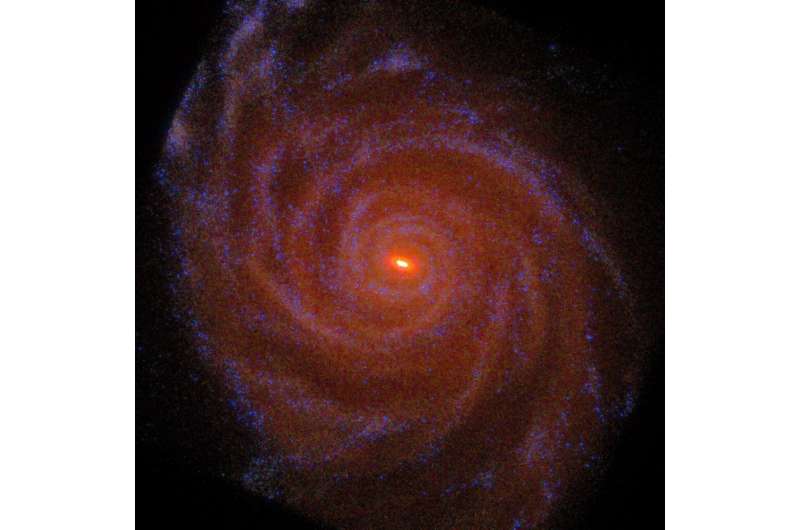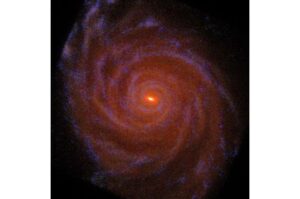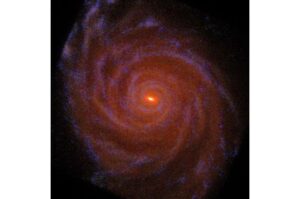
Recent research suggests that dark matter within the Milky Way has a distinct distribution that could explain the gamma ray excess observed in the galaxy’s center. This study, published in Physical Review Letters on October 19, 2025, indicates that high-resolution simulations reveal a flattened and asymmetrical arrangement of dark matter, challenging earlier assumptions of a spherical distribution.
For years, scientists have theorized that the gamma rays detected by the FERMI space telescope may result from dark matter annihilation. However, the spatial distribution of these gamma rays did not align with previous models of dark matter. Competing theories suggested that ancient millisecond pulsars, which are highly dense neutron stars that spin rapidly, could be responsible for the excess gamma rays observed.
The new findings come from a collaborative effort involving researchers from the Leibniz Institute for Astrophysics Potsdam, the Hebrew University in Israel, and Johns Hopkins University in the United States. Lead author Moorits Muru explained that their simulations modeled the formation of Milky Way-like galaxies under conditions akin to those found in Earth’s cosmic neighborhood. This approach allowed them to reproduce galaxies that closely resemble our own.
The results demonstrate that dark matter does not radiate outward from the Galactic Center as previously thought. Instead, it is organized similarly to stars, which could account for the gamma ray excess. Noam Libeskind, a researcher at the Leibniz Institute, noted, “When the FERMI space telescope pointed to the galactic center, the results were startling. The telescope measured too many gamma rays, leading to a flurry of competing theories regarding the so-called ‘gamma ray excess.'”
The study’s findings suggest that the flattening of the dark matter halo is sufficient to explain the observed gamma ray excess as a result of self-annihilating dark matter particles. Muru emphasized the importance of these calculations, stating, “The hunt for dark matter particles that can self-annihilate should be encouraged and brings us one step closer to understanding the mysterious nature of these particles.”
This research not only enhances our understanding of dark matter but also provides valuable insights into the fundamental workings of our galaxy. As scientists continue to explore these findings, they may unlock further mysteries of the universe’s structure and composition.







